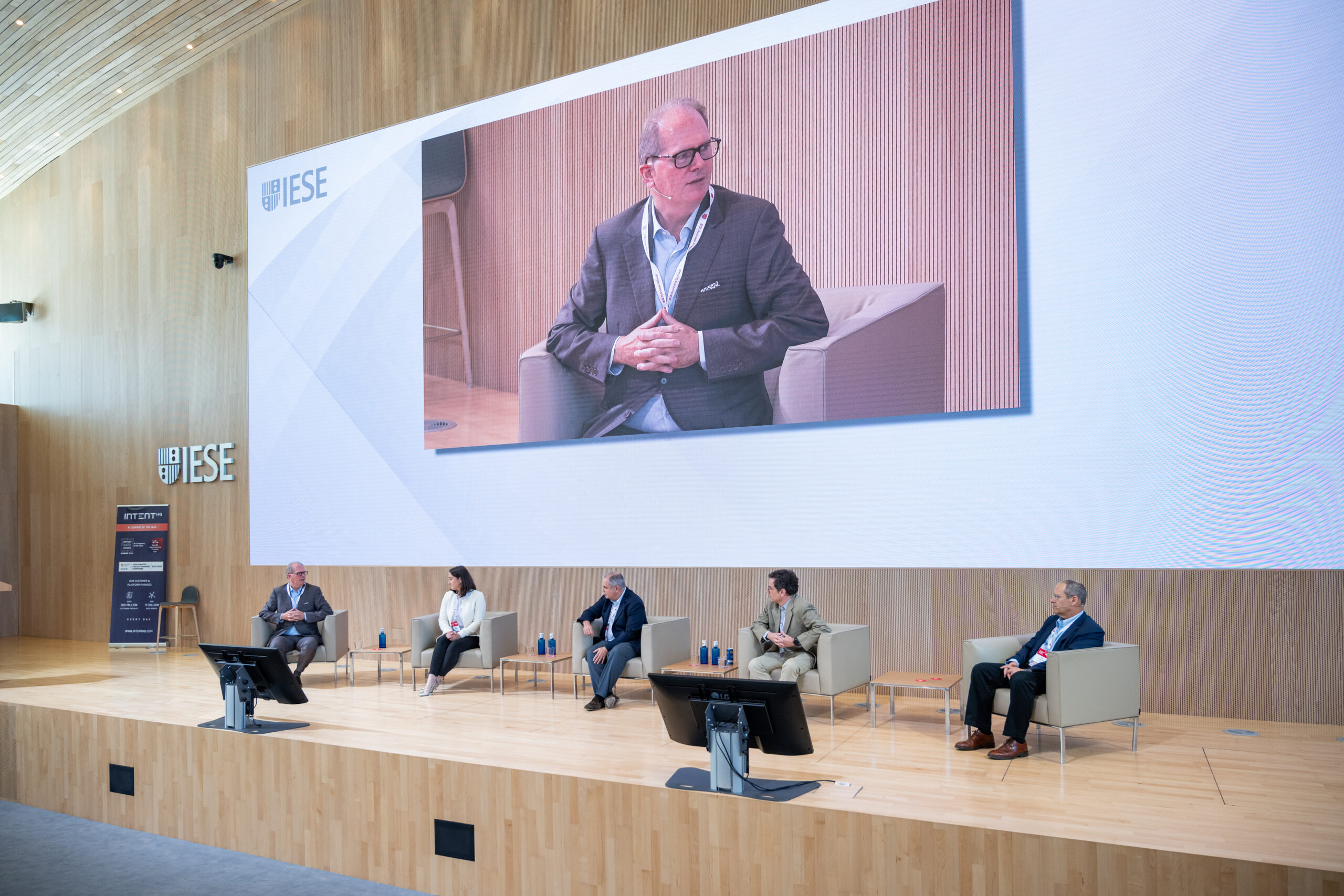In today’s hyper-competitive landscape, consumer expectations on brands continue to soar. This means businesses must seize every opportunity to stand out and drive growth. One key strategy is customer experience optimization, which has become essential for businesses across industries.
By leveraging powerful data insights and placing the user at the heart of their operations, businesses can create remarkable experiences that foster loyalty, attract new audiences and fuel sustainable growth.
What is customer experience optimization?
Customer experience optimization refers to the process of enhancing and improving every aspect of a customer’s interaction with a business. It involves gaining a deep understanding of an audience and addressing their needs, expectations and preferences to create meaningful and positive experiences.
The process of experience optimization encompasses various touch points across the buyer journey, including pre-purchase interactions, product or service usage, support and post-purchase engagement. By implementing effective strategies and utilizing data-driven insights, businesses are empowered to optimize the experiences they offer to build loyalty, increase customer satisfaction and, ultimately, drive long-term customer value.
Customer experience optimization is a continuous endeavor that requires a deep understanding of buyer needs, effective communication and a commitment to improving and delivering exceptional experiences at every opportunity.
Why is customer experience optimization important for your business?
When it comes to buying decisions, today’s consumers have more options than ever before. As such, brands must put their customers’ needs first and take steps to differentiate themselves from their competitors to satisfy and retain their users.
Optimizing every customer interaction using in-depth customer data and analytics allows brands to do just this, creating experiences that leave a lasting impression and foster loyalty. Embracing a holistic approach that combines customer experience optimization strategies with robust data analytics positions your business at the forefront of customer-centricity, driving brand advocacy and long-term business growth.
How is customer experience optimization applied in different industries?
Customer experience optimization is a vital aspect of business strategy across various industries, each with its own unique requirements and challenges.
In the retail sector, for instance, customer experience optimization may involve personalized shopping experiences, implementing seamless omnichannel strategies and leveraging technology to enhance convenience and accessibility for buyers. User experience and website optimization play a key role in ensuring a smooth and enjoyable journey for customers.
Similarly, in the technology sector, customer experience optimization revolves around intuitive user interfaces, proactive customer support and continuous innovation to meet evolving needs.
No matter which sector your business operates in, bad customer experience can be detrimental to your reputation, rendering optimization efforts essential.
What is the difference between customer experience and customer service?
Customer experience and customer service, though related, are two distinct concepts that shape a buyer’s interaction with a business.
Customer service specifically focuses on providing support and assistance during or after the user’s engagement, whether it be through direct interactions, in-person or digitally, or via phone calls. Its main objective is to address inquiries, resolve issues and deliver satisfactory solutions.
On the other hand, customer experience encompasses the broader scope of a user’s journey, encompassing every touchpoint and interaction from pre-purchase to post-purchase stages.
Unlike customer service, customer experience goes beyond individual interactions. It embraces an array of factors that contribute to a user’s end-to-end journey with a brand. This includes product quality, brand reputation, user interface and website experience, packaging and so much more.
The ultimate goal is to create a comprehensive, positive experience and a memorable impression that lingers throughout the entire customer lifecycle. Essentially, it’s about seeing the bigger picture.
What are the benefits of customer experience optimization?
When done right, the benefits of customer experience optimization for a business are endless. Here are some of the most notable advantages:
- Increased loyalty: By consistently surpassing expectations, companies can build stronger relationships, nurturing long-term loyalty and fostering repeat purchases. The secret lies in going above and beyond, consistently delivering experiences that leave audiences craving more.
- Better customer retention: By focusing on providing exceptional experiences, businesses can stay on their customers’ radars, reducing churn and creating deeper connections.
- Enhanced brand reputation: Satisfied clients are more likely to become brand ambassadors who share their experiences with others in their circle. This can improve your reputation and amplify your brand visibility in competitive markets.
- Increased customer lifetime value: When users have a great experience with a brand, they’re more likely to purchase again and again. Additionally, they will become more open to upselling or cross-selling opportunities.
- Competitive advantage: Businesses that go the extra mile to deliver exceptional experiences differentiate themselves from competitors, ultimately achieving increased market share and sustainable growth.
How does customer experience optimization strengthen your relationships?
By consistently delivering positive experiences, companies can establish a foundation of trust and confidence, assuring buyers that their needs and expectations are met and prioritized.
All of this cultivates strong relationships that are characterized by reliability and deeper connections that speak to them as individuals. By going above and beyond to create memorable and personalized interactions, businesses can forge bonds that result in the user feeling valued and understood.
As a result, satisfied customers are more likely to become valuable assets – loyal and vocal brand advocates who willingly share their positive experiences with others. This may be reflected in an improved Net Promoter Score (NPS), which is a key metric for brands to understand the success of their customer engagement and experience strategies.
What are the best ways to optimize customer experience?
To optimize the user experience, consider the following key strategies:
- Personalization: Tailor messaging, interactions and offerings based on customer data. This enables businesses to nurture stronger connections with their customers.
- Seamless omnichannel experience: Provide a consistent and frictionless experience across multiple channels. Be sure to integrate systems and data for smooth transitions that don’t risk customers losing information or encountering friction points along the way.
- Proactive customer support: Anticipate needs and help users through their problems by providing assistance through chatbots, automated notifications, self-service options and more.
- Continuous feedback and improvement: Actively seek valuable user feedback through surveys, forms and social media monitoring, and use it to make data-driven improvements to enhance the user experience for better results.
- Innovation and technology adoption: Embrace innovative technologies to streamline processes and deliver personalized experiences that speak directly to the needs of your audience.
- Customer-centric organizational culture: Foster a customer-centric mindset across the business, aligning goals and incentives to prioritize the customer in decision-making.
How data can drive increased personalization
As an integral part of any customer experience optimization strategy, personalization relies on data.
But the true power of data-driven personalization lies in a business’ ability to understand individual customer preferences and behaviors at a granular level. By tracking customer interactions across multiple touchpoints, brands gain invaluable insights into the intricacies of each customer’s unique journey. These insights can be gleaned from:
- Customer interactions
- Transactional data (purchase history, order details, payment information etc)
- Customer relationship management (CRM) platforms
- Feedback and surveys
- Third-party data (CRM enrichments, actual behavior data, spending patterns, competitor insights)
- Analytics and machine learning (advanced solutions that can identify patterns and predictive insights from large volumes of data)
Armed with this knowledge, businesses can gain a holistic understanding of their customers to deliver hyper-relevant recommendations, customized content marketing messaging and targeted promotions, thus becoming intrinsically relevant to the customer’s life.
Challenges of customer experience optimization
Implementing effective experience optimization strategies comes with its fair share of challenges.
- Data integration and analysis: Collecting and analyzing vast amounts of data from multiple touchpoints requires advanced data ingestion tools, predictive analytic capabilities and robust data infrastructure. Overcoming this involves employing data-driven strategies and leveraging technologies like AI and machine learning for valuable insights – which can prove challenging for smaller businesses.
- Consistency across channels: Ensuring a seamless customer experience across various channels demands careful coordination, system integration and aligned messaging. It involves training employees to deliver a unified brand experience regardless of the interaction medium.
- Balancing data-driven personalization and privacy: Striking a balance between delivering a personalized experience and privacy concerns requires obtaining consent, implementing security measures and transparently communicating data usage to maintain trust.
- Employee engagement and empowerment: Engaging and empowering employees to create exceptional experiences can be challenging, and this requires both cultural and technical aspects. Investment in training, clear guidelines, easy to use visualization tools and a positive company culture are all necessary to emphasize the importance of customer experience.
- Evolving audience expectations: Meeting ever-changing expectations driven by technology advancements requires agility, proactive strategy adaptation, competitor analysis and user feedback.
How has customer experience optimization evolved over the years?
Customer experience optimization has changed over the years, transforming from a reactive approach to strategy that requires proactive management, fueled by data insights and personalization.
Today, businesses place great emphasis on forging emotional connections and providing exceptional experiences at every stage of the user journey. The advent of technology, social media and analytics has revolutionized how businesses understand and fulfill expectations.
As a result, experience optimization has become imperative and is continuously evolving in tandem with shifting consumer behaviors and technological advancements.
What does the new customer experience look like today?
The modern buyer experience is marked by personalization, convenience and seamless interactions across various channels. Today’s consumers have heightened expectations, demanding businesses anticipate their needs and provide tailored experiences that reflect their unique circumstances. This encompasses personalized recommendations, customized offers and relevant content.
Technology plays a pivotal role in shaping the user experience, as mobile apps, self-service options and artificial intelligence tools like chatbots offer convenience and immediate access to information and support. Customers also seek consistency across channels, desiring a smooth transition from online to offline interactions. Moreover, social media and online communities have empowered consumers to voice their opinions, emphasizing the importance of authentic customer engagement and transparent communication from brands.
In essence, the new user experience harmonizes personalization, technology-driven convenience and a customer-centric approach that fosters trust and a deeper understanding between buyers and brands.
How do you find a customer experience optimization strategy that works for your company?
Finding an optimization strategy that works for your company requires a thoughtful and systematic approach. Here are some key steps to consider:
- Understand your customers: Start by gaining a deep understanding of your target audience. This involves conducting market research, collecting feedback and analyzing user data to identify their preferences, pain points and expectations. These insights will inform your strategy and help you tailor experiences that resonate with your customers.
- Align with business goals and values: Consider how improving customer experience can contribute to your bottom line and support your long-term objectives. This ensures that your customer experience efforts are integrated into your business strategy and receive the necessary resources and support.
- Define your customer journey: Identify the various touchpoints and interactions customers have with your brand, including pre-purchase, purchase and post-purchase stages. Highlight areas for improvement, potential pain points and opportunities for personalization or enhanced engagement.
- Set clear objectives: Establish specific and measurable objectives for your strategy. Define key performance indicators (KPIs) that align with your goals, such as retention rate and NPS. These objectives will help you evaluate the success of your customer experience initiatives and track progress over time.
- Invest in training and empowerment: Ensure your employees are equipped with the necessary skills and knowledge to deliver exceptional customer experiences. Provide comprehensive training on customer service, empathy and effective communication and empower them to make customer-centric decisions and resolve issues promptly.
- Iterate and adapt: An effective customer experience strategy is an ongoing process of experimentation and improvement. Continuously analyze and evaluate your initiatives, making adjustments based on customer feedback and evolving market trends. Stay agile and responsive to changes in customer expectations and technological advancements to ensure you stay ahead of the curve.




